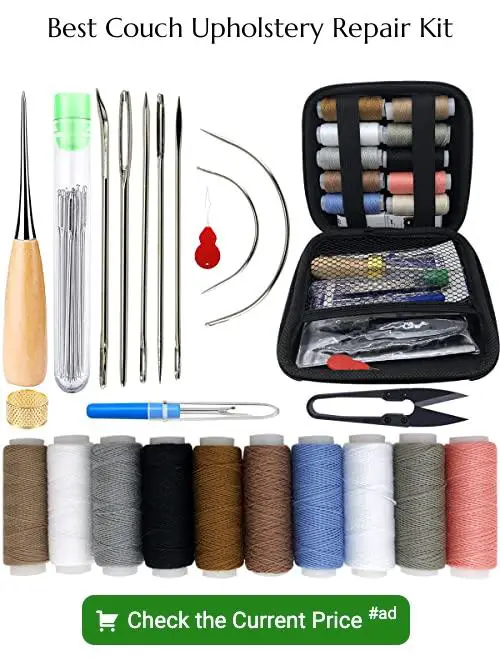Last updated on
Discover the simple steps to fix your couch’s upholstery and bring new life to your living space with this comprehensive guide.
Your couch is the centerpiece of your living room, and it’s where you spend a lot of time relaxing, entertaining guests, and creating memories with loved ones. But over time, wear and tear can take its toll on your couch’s upholstery.
From stains to tears to fading colors, there are many issues that can arise with your beloved sofa. Fortunately, fixing upholstery on a couch is not as daunting as it may seem.
In this article, we’ll provide you with some simple tips and tricks for repairing your couch’s upholstery so that it looks brand new again. So sit back (on another chair!) and read on to learn how to fix upholstery on your couch like a pro!
Table of Contents
Assessing the Damage
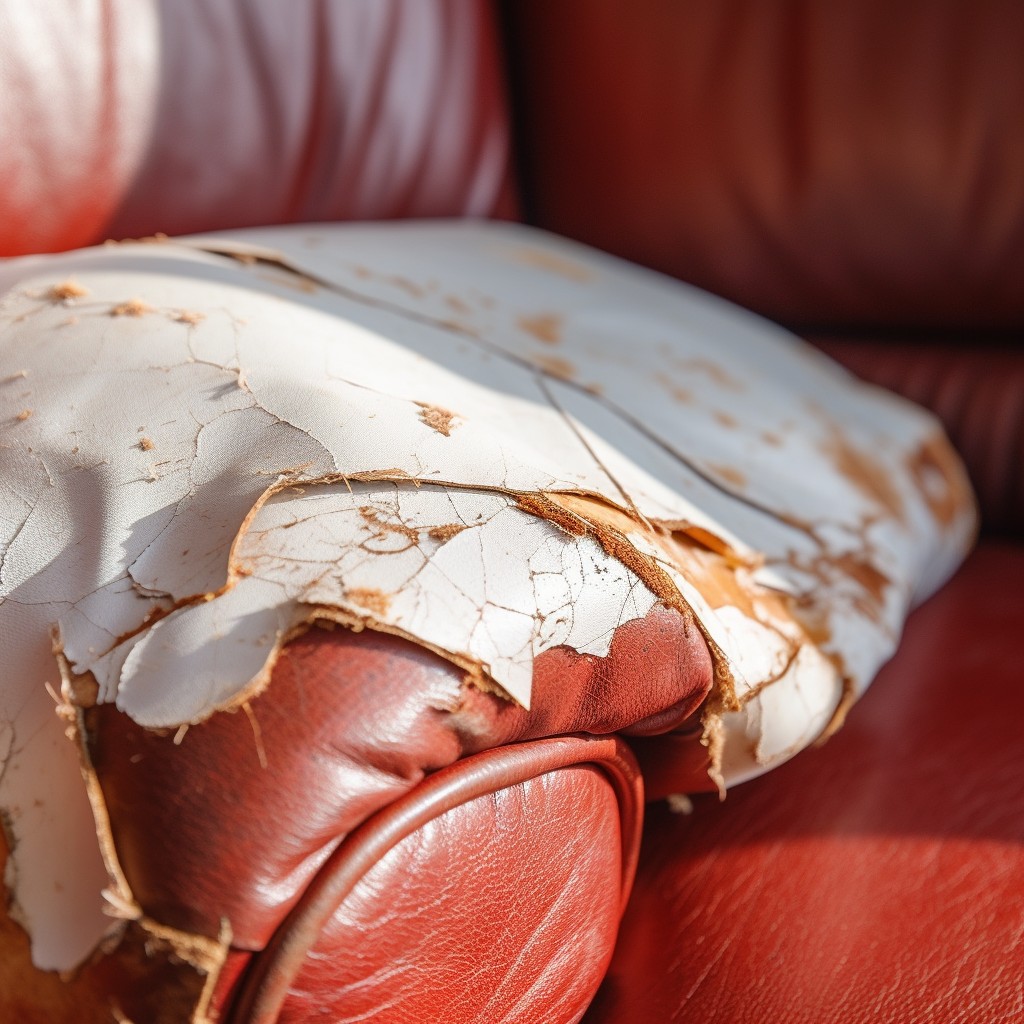
The first step in fixing upholstery on your couch is to assess the damage. This will help you determine the extent of the problem and what needs to be done to fix it.
Start by examining your couch’s upholstery for any tears, stains, or fading colors. If there are any tears or holes in the fabric, take note of their size and location.
Next, check if there are any issues with springs or padding that may need attention as well. You can do this by sitting on different parts of your couch and feeling for unevenness or sagging areas.
Determine the Problem
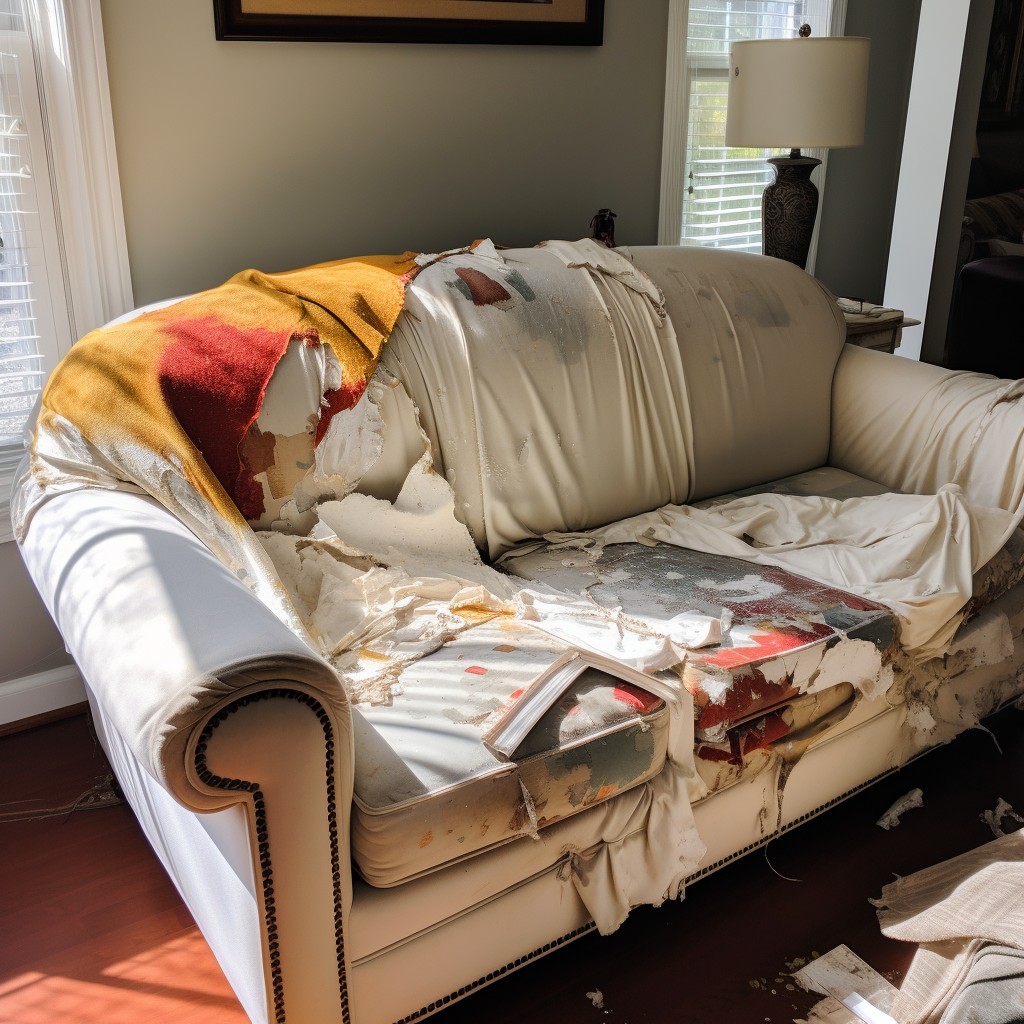
This involves identifying any tears, stains, or other damage that needs to be addressed. Take a close look at your couch and assess the extent of the damage.
Is it just a small tear in one area? Or are there multiple areas that need attention? Once you’ve identified all of the issues with your upholstery, you can begin to plan out how best to fix them.
For example, if there is a large tear on one cushion but no other visible damage elsewhere on the sofa, then repairing or replacing just that cushion may be sufficient. On the other hand, if there are several smaller tears throughout different parts of your couch’s fabric or padding has become lumpy and uncomfortable over time – then more extensive repairs may be necessary.
Gathering Upholstery Tools
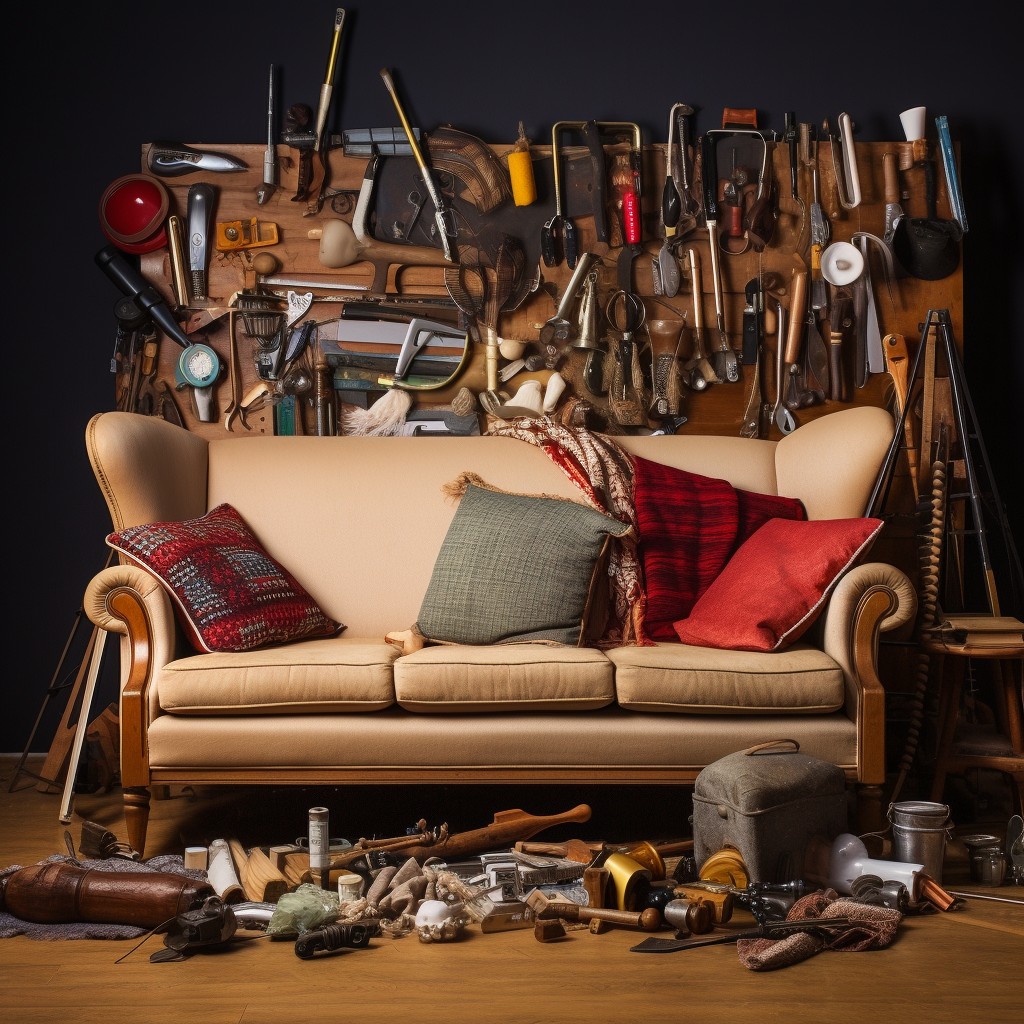
Having all of your tools in one place will make the process much smoother and efficient.
Some essential upholstery tools include:
- Upholstery needles
- Thread
- Scissors or rotary cutter
- Pliers or staple remover
- Tack hammer or rubber mallet
- Upholstery pins
- Measuring tape
You may also need additional materials such as foam padding, batting, webbing straps, and replacement fabric depending on what needs to be repaired.
It is important to note that some specialized upholstery tools can be expensive. However, investing in quality equipment can save you money in the long run by allowing you to complete repairs more effectively without damaging other parts of your furniture.
Repairing Couch Frame
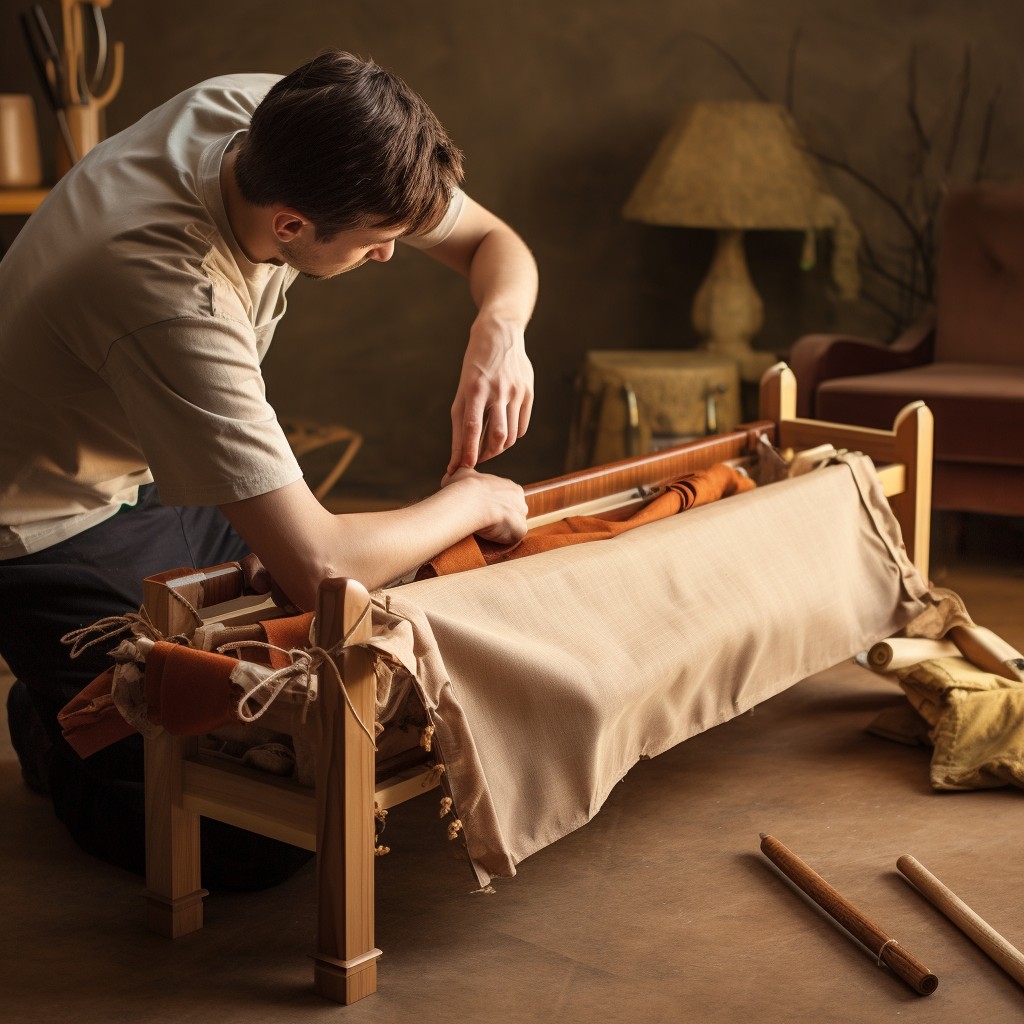
A sturdy and well-maintained frame is essential for ensuring that your couch lasts for years to come. If you notice any cracks or breaks in the wood, it’s important to address them before moving on with repairing the upholstery.
To repair a broken or cracked couch frame, start by removing any cushions and fabric covering from around the affected area. Next, use wood glue and clamps (or screws) to reattach any loose pieces of wood together.
Allow ample time for drying before proceeding with other repairs.
If there are large sections of damaged wood that need replacing entirely, measure out new pieces of lumber using old ones as templates if possible. Cut these new pieces down using a saw so they fit snugly into place where needed – then secure them firmly in position with nails or screws as appropriate.
Fixing Springs and Padding
These components of your couch can wear out over time and cause discomfort when sitting on it. To fix this issue, you’ll need some basic tools such as pliers and a staple gun.
Firstly, remove the fabric covering from underneath your sofa using a pair of pliers. This will give you access to the springs and padding beneath.
Next, inspect each spring for signs of damage or wear. If any springs are broken or damaged beyond repair, they will need replacing with new ones that match in size and shape.
If there is no visible problem with the springs but they feel loose when pressed down upon by hand then use pliers to tighten them up by twisting them back into place until they’re secure again.
After fixing any issues with your couch’s springs comes repairing its padding which may have become compressed over time causing an uneven surface on which people sit making it uncomfortable for long periods.
Choosing Replacement Fabric
This can be an overwhelming task as there are so many options available in terms of color, texture, and durability. When selecting a new fabric for your couch, consider factors such as how often you use your sofa and whether or not you have pets or children who may cause additional wear and tear.
If you’re unsure where to start when choosing replacement fabric for your couch upholstery repair project, visit a local furniture store or upholstery shop to see samples of different fabrics up close. You can also browse online retailers that specialize in home decor fabrics.
When selecting a new material for reupholstering furniture pieces like sofas or chairs always keep in mind that some materials will hold up better than others over time. For example leather is durable but expensive while cotton blends are affordable but less resistant to stains.
Choose the Right Upholstery Fabric
Choosing the right upholstery fabric is crucial for ensuring that your couch looks great and lasts for years to come. There are many different types of fabrics available, each with its own unique properties.
When choosing an upholstery fabric, consider factors such as durability, colorfastness (the ability of a material to retain its color), stain resistance, texture and pattern. If you have pets or children in your home who may be prone to spills or accidents on furniture then opt for durable materials like leather or microfiber which are easy-to-clean.
If you’re looking for something more decorative than practicality then go ahead with velvet or silk but keep in mind that these fabrics can be delicate so they require extra care when cleaning them up after any spillage occurs.
Measuring and Cutting Fabric
This step is crucial as cutting the fabric incorrectly can lead to a poor fit or even more damage. Start by measuring each section of your couch that needs new upholstery, including cushions, arms, backrests and seat covers.
Use a measuring tape to get accurate measurements of each section. Be sure to add an extra inch or two on all sides so that you have enough material for tucking and stapling later on.
Next up is cutting the fabric according to these measurements using sharp scissors or a rotary cutter if available. Make sure that you are cutting straight lines along with grain direction (if applicable) so that there are no wrinkles in your finished product.
Sewing Upholstery Pieces
This can be a bit tricky if you’re not used to working with heavy fabrics, but with some patience and practice, anyone can do it.
Firstly, make sure that your thread is strong enough for the job. Upholstery thread is usually thicker than regular sewing thread because of its durability.
You’ll also need a sturdy needle that won’t break when going through thick layers of fabric.
Next up is pinning your pieces together before stitching them in place. Make sure that everything lines up correctly before starting so that there are no mistakes later on down the line.
When sewing upholstery pieces together, use a straight stitch or zigzag stitch depending on what works best for your project needs. Be careful not to pull too hard on the fabric as this could cause puckering or stretching which will affect how well everything fits once finished.
Attaching New Fabric
Start by laying out the fabric on a flat surface and smoothing out any wrinkles or creases. Then, carefully position the fabric over the damaged area of your couch and secure it in place with pins or clips.
Next, use a sewing machine or needle and thread to sew along the edges of your new upholstery piece. Be sure to stitch as close as possible to where you removed old stitches so that they are not visible.
If there are any buttons on your couch cushions, now is also an excellent time for reattaching them using a button kit available at most craft stores.
Trim off any excess material from around seams before reinstalling cushions back onto their respective places.
Reinstalling Cushions
This is a crucial step in completing your upholstery repair project and ensuring that your couch looks and feels as good as new.
First, make sure that all of the cushion covers are clean and free from any debris or dust. Then, carefully place each cushion back onto its corresponding spot on the couch frame.
Make sure that they fit snugly into place without any gaps or sagging.
If you notice any issues with how the cushions fit after reinstallation, such as unevenness or lumps in certain areas, take some time to adjust them until they feel comfortable again. You may need to add extra padding underneath certain sections of a cushion if it has lost its shape over time.
Finishing Touches
This is where you can really make your sofa look brand new again. One of the easiest ways to do this is by adding decorative pillows and throws that complement your newly upholstered couch.
You can also consider adding armrest covers or slipcovers for an extra layer of protection.
Another way to give a fresh look to your sofa is by replacing its legs with something more modern or stylish. There are many options available online, from sleek metal legs to wooden ones in different finishes.
Don’t forget about cleaning and maintaining your newly upholstered couch regularly! Vacuuming it weekly will help keep dirt and dust at bay while spot-cleaning any spills immediately will prevent stains from setting in.
Caring for Upholstery
Regular maintenance can help prevent future damage and extend the life of your furniture. Here are some tips for caring for upholstery:
1. Vacuum regularly: Dirt, dust, and debris can accumulate on upholstered furniture over time, causing wear and tear on the fabric fibers.
Use a vacuum with an upholstery attachment to remove dirt from cushions, backsides of chairs or sofas.
2. Rotate cushions: To ensure even wear on your couch’s cushions rotate them every few months.
3. Avoid direct sunlight: Sunlight can cause fading in fabrics over time so try not to place upholstered furniture in direct sunlight if possible.
4. Clean spills immediately: Accidents happen! If something spills onto your sofa or chair clean it up as soon as possible using a damp cloth (not wet) before stains set into the fabric permanently.
Clean and Protect Your Couch
Regular cleaning is essential for maintaining the appearance of your couch. Vacuuming once a week can help remove dirt and debris that can cause wear and tear on the fabric over time.
Consider using a protective spray or treatment on your newly upholstered couch. These products create an invisible barrier that helps repel spills, stains, and other types of damage.
When dealing with spills or stains on your upholstery, act quickly! Blot up any excess liquid with a clean cloth as soon as possible before it has time to soak into the fabric. Avoid rubbing or scrubbing at the stain since this can push it deeper into the fibers.
Tips to Keep Furniture Upholstery From Tearing
Here are some tips that can help you keep your furniture upholstery from tearing:
1. Avoid sharp objects: Make sure that there are no sharp objects around the couch or any other furniture with fabric upholstery.
2. Don’t jump on the sofa: Jumping on the sofa may seem like fun, but it can cause damage to both the frame and fabric of your couch.
3. Clean spills immediately: Spills should be cleaned up as soon as possible because they can seep into fabrics and weaken them over time.
4. Rotate cushions regularly: Rotating cushions will ensure even wear across all areas of a cushion so one area doesn’t become more worn out than another.
5. Use armrest covers or throws: Armrest covers or throws not only protect against stains but also prevent friction between skin oils and fabrics which causes wear over time.
How to Repair Torn Upholstery
First, assess the size and location of the tear. If it is small and in an inconspicuous area, you may be able to repair it with fabric glue or tape.
However, for larger tears or those in more visible areas of the couch, you will need to use a patch.
To repair torn upholstery using a patch:
- Choose a piece of fabric that matches your couch’s original material.
- Cut out a piece slightly larger than the tear.
- Apply fabric glue around the edges of both sides of the torn area.
- Place your patch over one side and press down firmly.
- Use pins to hold everything together while drying
- Allow time for drying before removing pins
Materials to Repair Torn Upholstery
Here are some of the most common materials you’ll need:
1. Upholstery thread: This type of thread is thicker and stronger than regular sewing thread, making it ideal for repairing tears in your couch’s fabric.
2. Needles: You’ll need a variety of needles in different sizes to accommodate different types of fabrics and repairs.
3. Fabric glue: Fabric glue can be used to repair small tears or holes quickly without requiring any sewing skills.
4. Patches: If you have a larger tear or hole that needs patching, consider using an iron-on patch made from similar material as your couch’s upholstery fabric.
5. Scissors or rotary cutter: A sharp pair of scissors or rotary cutter will make cutting through thick upholstery fabric much easier and more precise.
6. Tape measure/ruler – To ensure accurate measurements when cutting new pieces for replacement.
Use Doilies As Patches
These delicate pieces of fabric can be found at thrift stores, garage sales, or even in your grandmother’s attic. Simply cut the doily to fit over the damaged area and use fabric glue to attach it securely.
Not only will this method save you time and money compared to more extensive repairs, but it also adds a unique touch of vintage charm to your couch.
However, keep in mind that while this technique may work well for smaller damages on light-colored fabrics such as cotton or linen blends; it may not be suitable for larger tears on heavier materials like leather or suede. In those cases where damage is severe enough that patches are needed but cannot be done with simple methods like using doilies; hiring an experienced professional upholsterer might be necessary.
Make a Slip Cover
A slipcover can give your sofa a fresh new look without the expense and effort of completely replacing the upholstery. Plus, it’s easy to remove and wash when needed.
To make a slipcover for your couch, start by measuring all dimensions of the sofa carefully. Then choose fabric that complements or contrasts with other pieces in the room while also being durable enough for everyday use.
Next, cut out pieces of fabric according to measurements taken earlier using scissors or rotary cutter as per preference. Sew together each piece following instructions on sewing machine manual until you have created one large cover that fits snugly over every part of your couch.
Hire A Trusted Couch Upholstery Repair Service
Hiring an experienced and trusted couch upholstery repair service can save you time and money in the long run. These professionals have years of experience repairing all types of furniture, including sofas and chairs with damaged upholstery.
When choosing an upholstery repair service, make sure they are licensed and insured. You should also read reviews from previous customers to ensure that they provide quality workmanship at reasonable prices.
While hiring a professional may cost more than doing it yourself, their expertise will ensure that your couch looks as good as new when they’re finished with it. Plus, many services offer warranties on their repairs so you can rest assured knowing that any future issues will be taken care of without additional costs.
Whether you decide to tackle fixing your sofa’s upholstery yourself or hire a pro for help – don’t let damaged fabric ruin its beauty! With these tips at hand (and some patience), anyone can restore their beloved piece back into tip-top shape again!
FAQ
Can you fix upholstery fabric?
One can fix upholstery fabric by using iron-on fabric patches or self-adhesive fabric repair patches, depending on the size of the hole and suitability of the patch material.
What are the essential tools and materials needed for upholstery repair on a couch?
Essential tools and materials for upholstery repair on a couch include fabric, batting, foam, scissors, staple gun, webbing, upholstery thread, needle, pliers, and a sewing machine.
What are the different methods to fix common upholstery issues such as tears, loose threads, or sagging cushions?
To fix common upholstery issues like tears, loose threads, or sagging cushions, methods include repairing or replacing fabric, using a needle and thread to fix loose threads, and adding or replacing cushion stuffing to combat sagging.
How do I clean and maintain my couch’s upholstery to prolong its lifespan and appearance?
To clean and maintain your couch’s upholstery for a prolonged lifespan and appearance, regularly vacuum, treat stains immediately, and schedule professional cleaning every 12-18 months.
